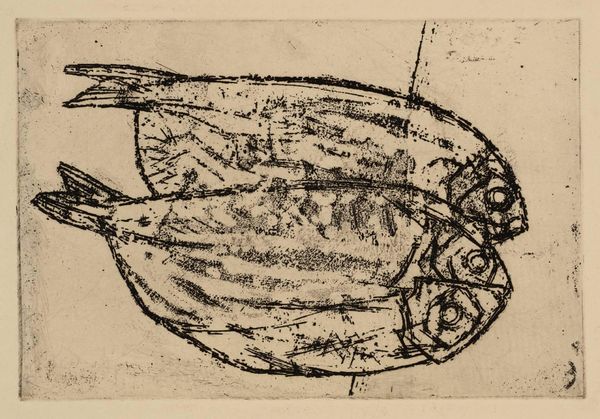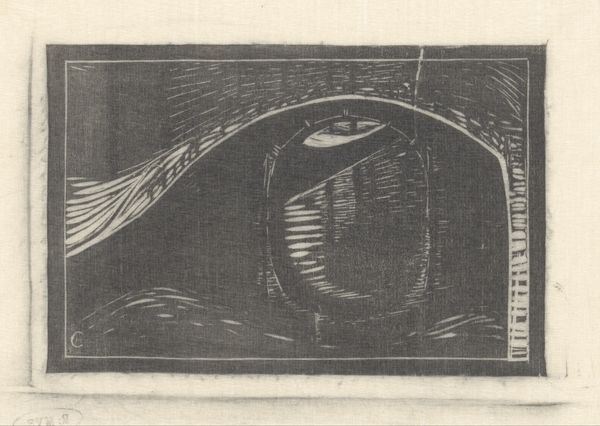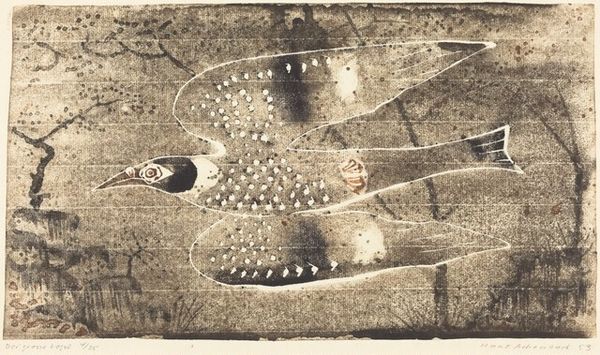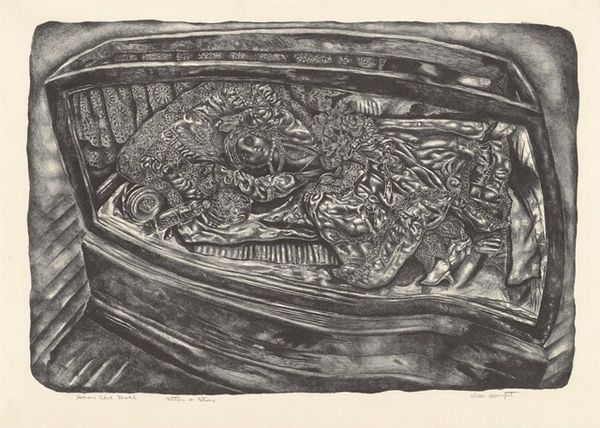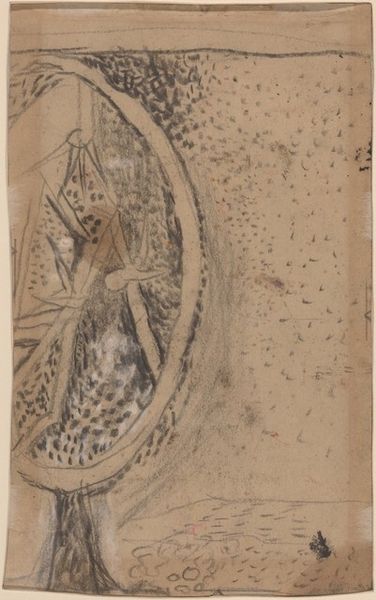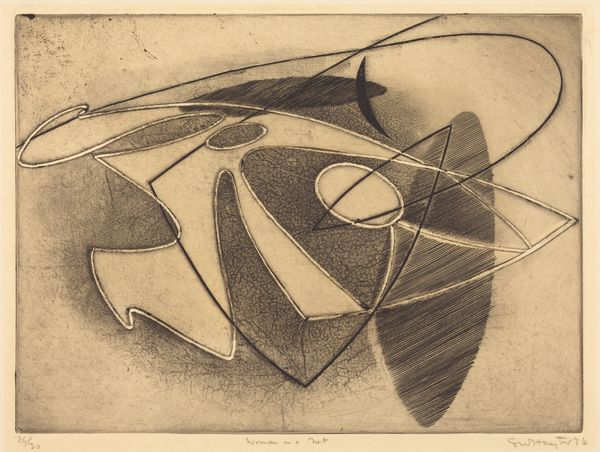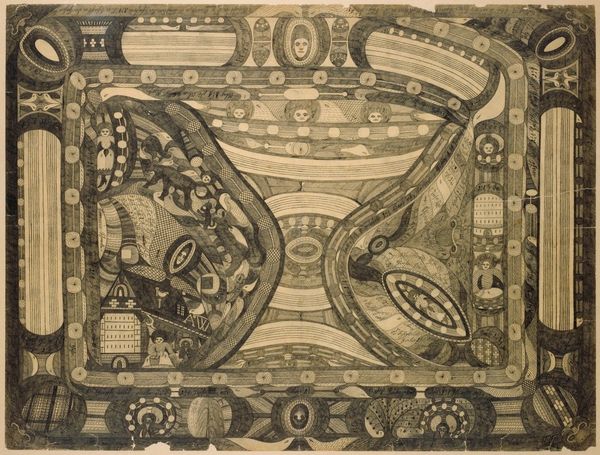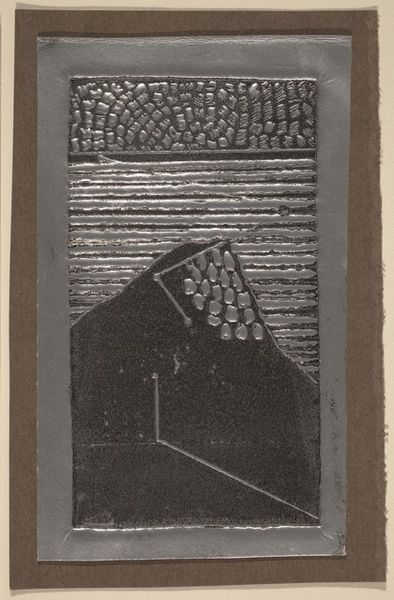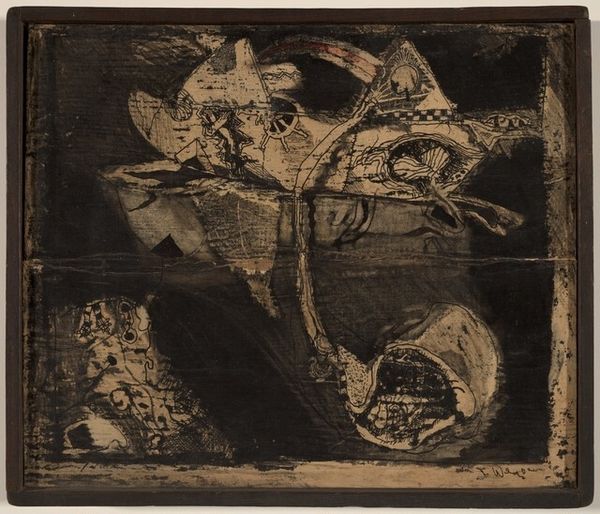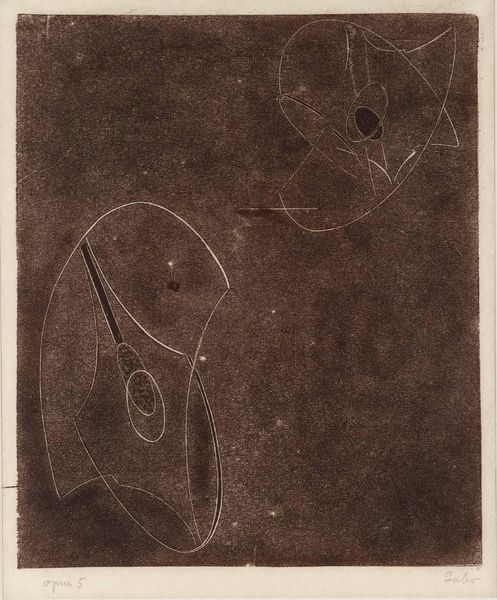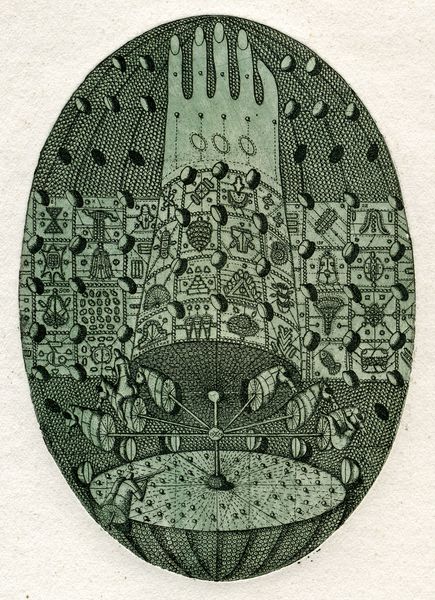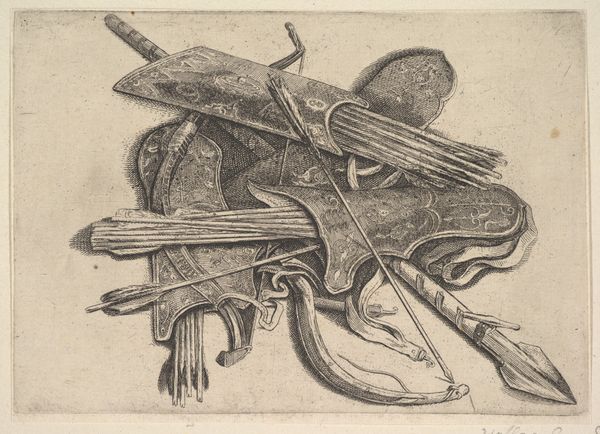
graphic-art, print, linocut
#
graphic-art
#
toned paper
# print
#
linocut
Dimensions: image: 23 x 30.6 cm (9 1/16 x 12 1/16 in.) sheet: 31.2 x 38.1 cm (12 5/16 x 15 in.)
Copyright: National Gallery of Art: CC0 1.0
Curator: Here we have "Fish and Bottle", a linocut print by Charles William Smith. Editor: My first thought? A haunting little still life. The tones create a muted sort of stillness, yet there's also something very graphic and modern about it. It looks aged, as if someone had stumbled across this centuries from now, but from centuries before our time. Curator: The linocut technique lends itself well to that effect. Because it’s a relief print, where the artist carves away areas leaving raised portions to be inked, the resulting image often has a somewhat raw, textural quality. The act of carving becomes a kind of labor narrative. Editor: Right. You can practically feel the artist's hand at work, patiently removing material to reveal this simple composition. There's also something compelling about Smith's subject choices here, fish and a bottle – such humble, everyday objects, elevated somehow. What could they signify? Curator: Fish have historically been laden with symbolism, particularly within religious contexts, representing abundance and faith, but here? In conjunction with the bottle? I wonder if Smith is alluding to themes of sustenance, survival or perhaps a celebration of simple provisions. Also, you will see that it's a print, edition number 3 of 10. Think about how the seriality affects its market value. Editor: Oh, I like that thought! It reminds me of quiet dinners with family, where something is slightly off, so the still life feels so stark yet full of emotion. I keep coming back to the texture, though—that hand-worked quality just speaks volumes about the artistic process and invites you in. It’s as though the whole scene, the bottle, the fish, even that quiet tone, are suspended in feeling. Curator: Absolutely, and by considering Smith's probable socioeconomic circumstances, perhaps these quotidian scenes mirrored their world in sharp and evocative simplicity, inviting deeper contemplation. Editor: In that case, I now understand why it looks old and contemporary at once, timeless in feeling. Curator: Indeed, it prompts us to consider the inherent complexities nestled within such seemingly uncomplicated visual statements.
Comments
No comments
Be the first to comment and join the conversation on the ultimate creative platform.
